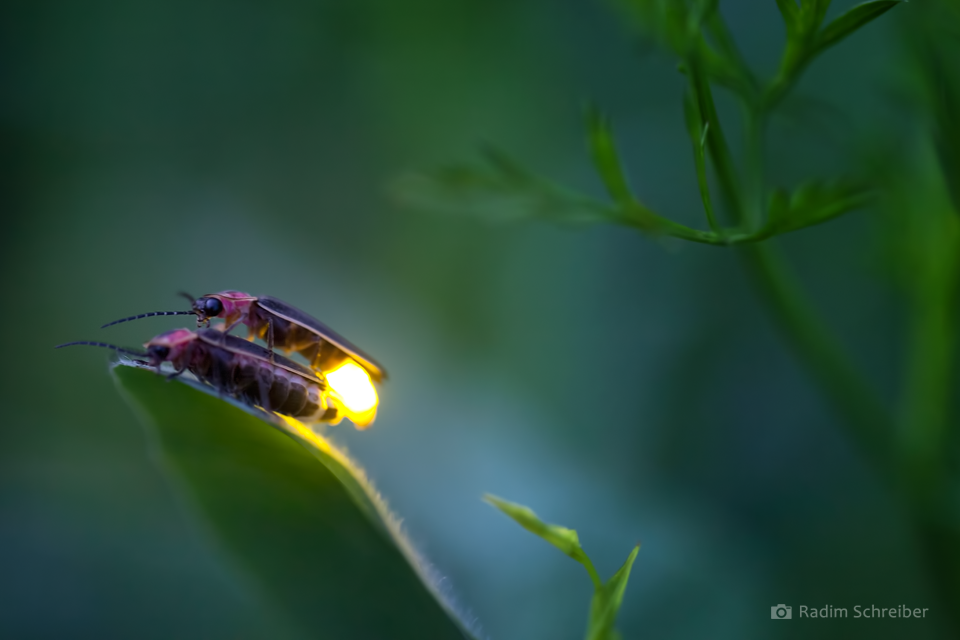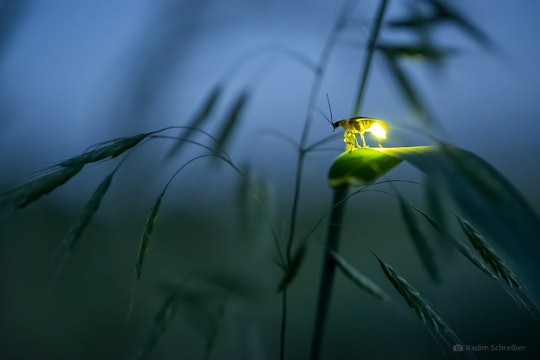Artificial lights are disrupting firefly mating, putting them on the road to extinction
Light pollution impacts mating success and courtship behavior in fireflies, says recent study
On a summer evening in the Smoky Mountains, photographer Radim Schreiber, is standing in a forest. Wind is rustling the leaves. As dusk sets in, he looks through the trees and sees amazing flying specks of light – a wild, fairy glow.
He's looking at fireflies, also known as lightning bugs. But fireflies may be in trouble because of, ironically, light itself.
According to a 2019 study, artificial light impacts fireflies in a big way. Fireflies find mates through a courtship process that involves flashing their "lights." And not just any light: the courting process involves a series of flashes, which are unique to each male and female. Females will choose their mate based on their unique flashing patterns. The females, in turn, will start a flashing "dialogue" with the mate of their choosing. It's an amazing sight to see.
So how does this courtship process clash with the lights we keep on at night? Fireflies rely on light to communicate, which has led scientists to wonder if light pollution impacts them in some way. Prior studies by the researchers confirmed this, as well as a substantial body of research. So the next logical question, and the one that the researchers tackled, was how this lighting impacts fireflies at the most basic level: courtship.
To measure and investigate how attracted fireflies were to artificial light, Ariel Firebaugh and Kyle Haynes, two scientists based at the University of Virginia, set up 15 pairs of white tarps outside at the Blandy Experimental Farm. One tarp in each pair was illuminated by an LED light, while the other, located 10m (~32 ft) away, was left in the dark.
The researchers then watched the courtship "flashings" of stationary females and free-flying males in Photuris (predator) and Photinus (prey) fireflies. In the wild, females sit stationary on a plant while the males fly around and flash their lights. To replicate this while disturbing the process as little as possible, a nylon-mesh container is placed on top of females as they perch on grasses.

Mesocosms come in all different shapes and sizes. This is an example of a mesocosm made from cattle tanks.
Finally, to look more closely at how lights affected mating success, Firebaugh and Haynes used mesocosms (an experimental tool where natural conditions are replicated in a controlled environment) consisting of mesh sided canopies. These mesocosm canopies looked much like a pop-up canopy tent, but with mesh screen sides. To find mating behavior, the fireflies are marked with a fluorescent powder. After the trial was over, they are collected and observed for signs of mating: male-colored powder on female reproductive organs.
In these lighted zones, the fireflies were less likely to engage in courtship flashes, and mating success was reduced. The researchers also investigated whether light pollution affected predator-prey relationships, but no significant impact was found.
Outdoor LED lighting spaces, like the one used in this study, can also act as demographic traps, say the researchers. That means that immigration (or the amount of fireflies coming into the area) far exceeds emigration (the amount of fireflies leaving the area) – meaning that fireflies, barring other circumstances, will stay in the lit areas. While the fireflies may be loving the bright LED lights, the lighting affects courtship behaviors, which are significantly reduced, and also likely reduces mating success.

A male and female firefly mate.
Fireflies are attracted to light but this light "sucks" them in. It's like how a warm, cozy house is where you want to be on a cold winter day. It attracts you and you don't want to leave. In the same way, fireflies are attracted to our bright LEDs and don't want to leave the light. More fireflies enter the area, and then leave. They are attracted to it like a trap. But, like how it's not healthy for us to stay home all the time, it's not healthy for fireflies to stay attracted to this light. Fireflies rely on ambient light cues to know when to start courtship flashing, but when the environment is always lit, there is a problem. Courtship behaviors go down and breeding success is also likely to go down.
For Schreiber, a photographer specializing in fireflies, their significance transcends the food chain into that of cultural importance: "Often people have very joyful memories [about fireflies] from childhood, and when these experiences are being shared across people from different nations, they may feel that these experiences are more important than other differences we may have."

A firefly is seen against a full moon.
Schreiber is now on a mission to capture the beauty of fireflies – before they disappear forever. He said, via email, that "There are unique and beautiful species of fireflies that live in very small areas, and when they lose their habitat, we may not see these fireflies ever again. I have been recording some of these species on camera with the idea of preserving them at least on video."
This is a huge problem – light pollution is one of the fastest growing types of environmental degradation, and more than 99 percent of people living in America and Europe don't experience a "natural" night sky.
As urban areas continue to grow, this problem will only get worse. In early February, researchers at Tufts University released a study pegging light pollution as the second most serious threat to fireflies, according to a survey of 49 experts across the world. Only habitat loss is more dangerous.





This is very interesting explanation of how fireflies are impacted by light pollution, I especially liked the explanation of how the experiments are performed. Do you reckon the reduction in courtship behaviour is a sort of energy saving tactic, i.e. there’s so much ambient light, it’s not worth their while to go through all the effort of flashing their lights?
I also wonder what possible solutions are. The study used LED lights, I presume white ones, could we maybe start using red lamps, or other colours of light to reduce our impact?